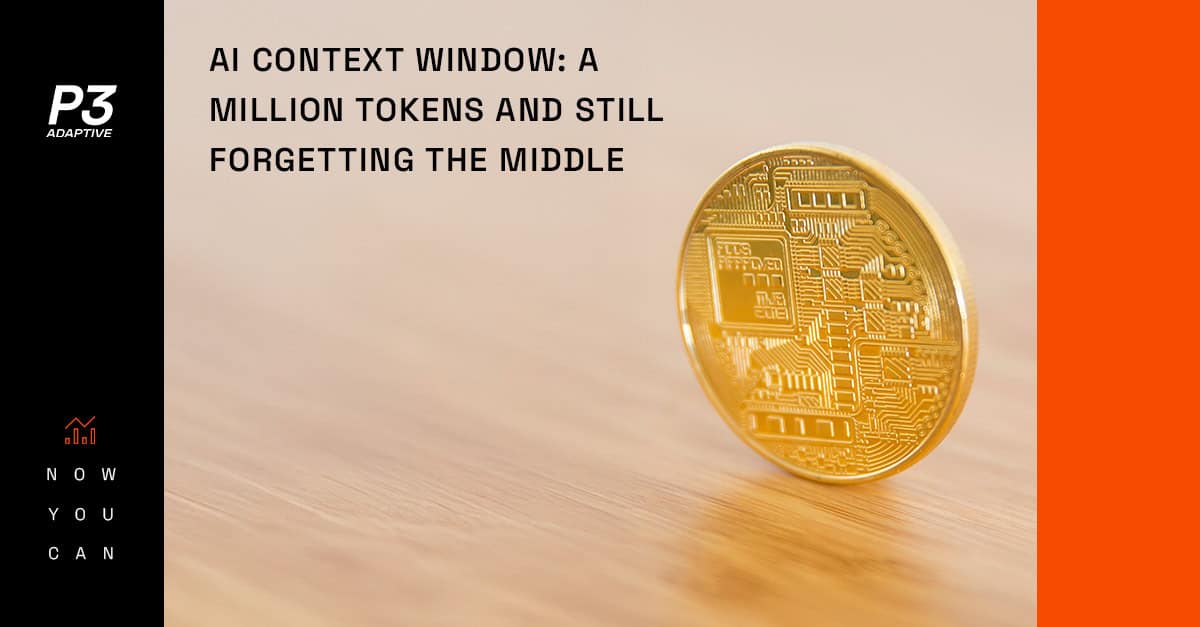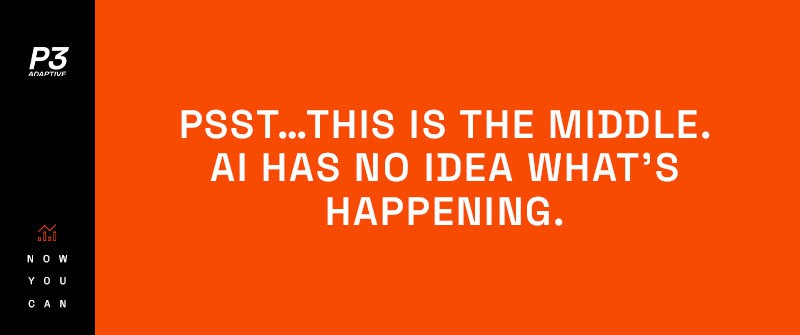
Machine-fed data still needs a human-led brain.
AI says it can handle a million tokens. That sounds unstoppable. A million tokens! You imagine handing it a 100-page report and watching it absorb every chart, footnote, and sticky note like some caffeinated super-genius.
But here’s the problem. AI will nod politely at page one, wave at the last page, and completely ghost the middle.
It’s the book report cheat we all pulled in high school. Skim the intro, skim the conclusion, and pray the teacher doesn’t ask about chapter eight.
Funny? Sure. Safe for business decisions? Not even close.
The Big Context Myth
Businesses love the “just dump it all in” fantasy. Every report, every meeting transcript, every spreadsheet. Drop it in and let AI figure it out.
The ugly truth is this. Big context doesn’t equal deep understanding.
AI doesn’t read like you do. It doesn’t lean forward, squint at the charts, and make a mental note in the margin. Large language models work by predicting patterns. Their AI context window focuses on the start and end of what you feed it, while the middle quietly fades away. As the text stretches on, the model blends sections together, forgetting which details connect to which conclusions.
That is why hallucinations show up. When AI can’t hold onto the middle, it stitches gaps with its best guess. That guess can sound brilliant and confident, but it may have nothing to do with what your report actually said.
If your AI strategy is “upload and pray,” you’re not building intelligence. You’re building risk dressed up as insight.
Why the Middle Is Everything
The middle is where business reality hides.
It’s where trends shift in the data tables, where the supporting evidence sits, where the small notes with big consequences live.
Imagine a quarterly report. The executive summary says revenue’s up. The last page shows a healthy growth forecast. But page 47 quietly warns that a key supplier is weeks away from collapse. If AI skips that middle, your forecast is a fantasy.
Or picture a compliance document. The first page lays out the rules, and the last page lists the penalties. The middle has the exceptions, deadlines, and context that make or break your decision. Lose that, and suddenly your “AI-powered” recommendation puts the company at risk.
The start and the end are flashy. The middle is what keeps you out of trouble.

How to Make AI Actually Useful
The companies actually getting value out of AI understand its context window and don’t just chase bigger token counts. They’re the ones who treat feeding AI like strategy instead of a data dump.
Here’s how they do it.
- Chunk with purpose
Break long reports into logical, labeled sections. Ten clean, context-rich bites will always outperform one massive plate of mush. This matters because clarity beats volume, and AI can’t give you reliable answers if it’s choking on clutter. - Give it a map
AI’s good at patterns, not telepathy. Label your chunks so it knows how they connect and what each part means. When you give it a map, the model can actually follow the trail instead of guessing. This matters because connected context creates trustworthy insights. - Retrieve, don’t recall
Stop asking AI to remember everything at once. Store your knowledge in a structured way, then pull in only the pieces that matter for the specific question you’re asking. Retrieval keeps the signal clean and the noise out. This matters because focus drives accuracy, and accuracy drives decisions you can bet on. - Check the middle before you act
AI’s great for speed and synthesis, but blind trust is expensive. Smart teams skim the outputs, then peek back at the source, especially the middle, before acting. This matters because the cost of a missed detail is always higher than the cost of a double-check.
This is the difference between AI that generates vibes and AI that delivers insight you can trust.
The Real Lesson
A million tokens doesn’t make AI a genius. It makes it a very confident skimmer with a short attention span. The companies winning with AI today aren’t showing off how much they can feed it. They’re quietly building systems that make sure the middle never gets lost.
And for the teams that are taking this seriously, the next step is already here. Digital colleagues—AI agents trained on your world and tuned to your voice—are starting to take their seats next to you. They won’t replace your team, but they will become the tireless partner that makes your team sharper and faster than ever.
If you’re a leader thinking about how to turn AI from shiny toy to business engine, the path is simple. Learn how to feed it smarter. Understand how context drives value. Avoid the traps that make most AI experiments stall out.
Want to hear this idea in action?
Rob and Justin break it down, explaining why context beats token count and how to make AI actually useful for business. It’s the conversation every smart leader should have before trusting AI with their next big decision.
Ready to put AI to work without the middle going missing?
We help businesses set up AI that actually works with the semantic models you’ve already built. Smarter context, real insights, and no wasted effort.
Let’s make your AI a teammate you can trust. Contact Us
Get in touch with a P3 team member